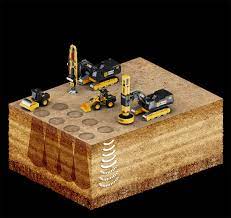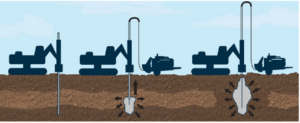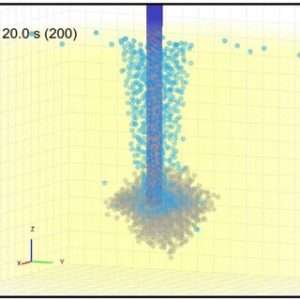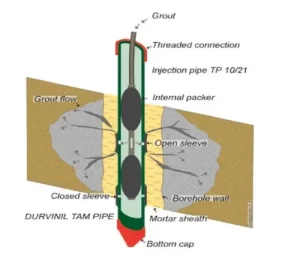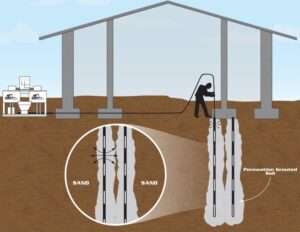Consolidation grouting is a vital ground improvement technique used to enhance soil strength, reduce settlement, and stabilize weak or compressible soils. It is primarily employed in geotechnical engineering to improve the bearing capacity of the ground, particularly for foundation support in areas with soft, loose, or saturated soils. By injecting grout into the soil, consolidation grouting can effectively reduce the potential for future settlement and improve soil stability under load.
How Consolidation Grouting Works
Consolidation grouting involves injecting a thick, low-mobility grout (typically cement-based) into the soil under pressure. The grout fills voids, fractures, and pore spaces within the soil, causing it to consolidate and increase its density. This process reduces the volume of air and water trapped within the soil, leading to a more compacted, stable material that is less prone to future settlement.
There are two primary types of consolidation grouting:
1.Single-Stage Grouting: A straightforward technique where grout is injected into the soil until it reaches the desired level of improvement.
2.Multi-Stage Grouting: A more refined process where grout is injected in stages, with the grout pressure and volume adjusted based on soil behavior and response to each stage.
Applications of Consolidation Grouting
Consolidation grouting is commonly used in several scenarios:
1.Foundation Support: Stabilizing soft or loose soils beneath foundations to prevent settlement or failure of structures like buildings, bridges, and highways.
2.Dewatering: Reducing water flow in saturated soils, particularly in areas near underground infrastructure or where excavation work is required.
3.Improvement of Soil Bearing Capacity: Enhancing the strength of soils to accommodate heavy structures, including industrial plants, commercial buildings, and storage tanks.
4.Controlling Settlement: Preventing or mitigating future settlement caused by external loads, particularly in urban construction projects where existing structures may already be in place.
Advantages of Consolidation Grouting
- Increased Load-Bearing Capacity: By densifying the soil, consolidation grouting enhances its ability to support larger, heavier structures.
- Reduced Settlement: Consolidation grouting minimizes the likelihood of settlement in soils that might otherwise compress under load, ensuring the stability of structures over time.
- Non-Disruptive: Unlike some other ground improvement techniques, consolidation grouting can often be done without disturbing existing structures or the surrounding environment.
- Adaptability: It can be applied to a variety of soil conditions, including silts, clays, and loose sands.
Key Considerations
- Soil Conditions: The soil must have adequate porosity to allow grout injection and should not be overly dense or highly fractured for effective consolidation.
- Grout Material: The choice of grout material (such as cement, chemical, or other types) will depend on the soil conditions, project requirements, and environmental factors.
- Injection Method: Careful control of grout injection pressure and volume is essential to achieve uniform consolidation and avoid issues such as over-grouting or uneven distribution.
- Time and Monitoring: Consolidation grouting may require multiple rounds of grouting and monitoring to ensure the desired results.
Conclusion
Consolidation grouting is an essential method for improving the ground’s stability and increasing the strength of weak or compressible soils. Its ability to reduce settlement, enhance bearing capacity, and provide long-term stability makes it an indispensable tool in the construction of heavy structures. With careful planning, selection of materials, and execution, consolidation grouting can significantly improve the quality of the ground, ensuring that infrastructure projects are safe, stable, and sustainable.


